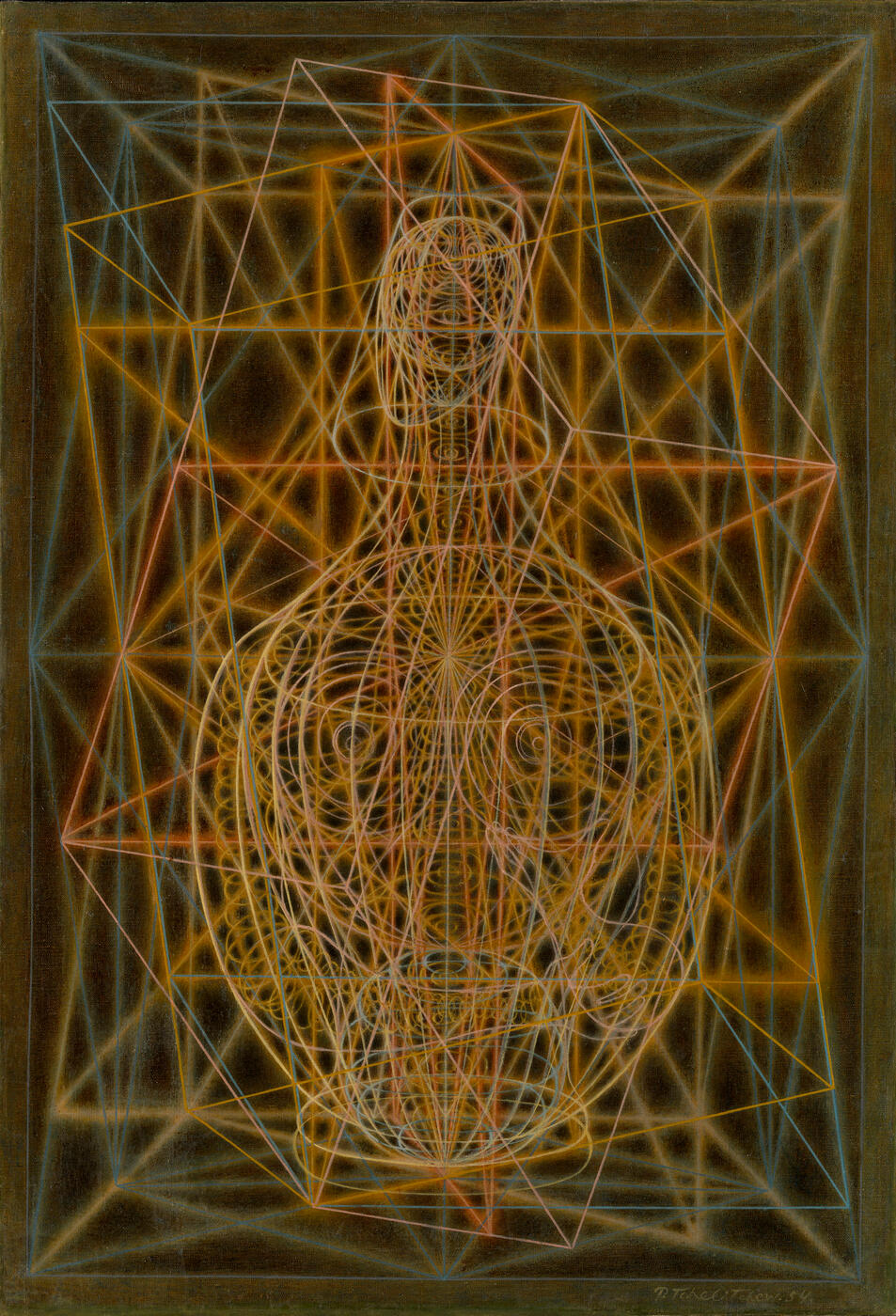25 - 28 November 2012 Russian Art Auctions
25 November 2012

* 32. TCHELITCHEW, PAVEL (1898–1957)
La Dame voilée, signed and dated 1954.
Oil on canvas, 74 by 51 cm.
120,000–180,000 GBP
Provenance: Pecci-Blunt collection, Rome (inscription on the reverse).
Private collection, Europe.
Authenticity of the work has been confirmed by the expert A. Kuznetsov.
Exhibited: Pavel Tchelitchew, Kournikova Gallery, 10 April–17 July 2011.
Literature: Exhibition catalogue, Pavel Tchelitchew, St Petersburg, Petronivs, 2011, p. 179, illustrated.
A. Kuznetsov, Pavel Tchelitchew: Metamorphoses, ARNOLDSCHE Art Publishers, Stuttgart, 2012, illustrated.
World-renowned artist, genius of stage design, distinguished draughtsman and one of the most interesting painters of the 20th century – Pavel Tchelitchew is represented here by a unique work of art, capable of intriguing the most exacting aesthete.
The innumerable transformations and reincarnations that marked Tchelitchew’s development throughout his creative journey were undoubtedly a reflection of the tempestuous artistic processes that took place in the first half of the 20th century, and their influence naturally brought about radical change in the artist’s style.
In 1950 Tchelitchew moved to Italy, settling initially in Grottaferrata not far from Rome and then in Frascati. His Italian works are extremely rare; today only about thirty drawings and pastels are known, and no more than fifteen oil paintings. Essentially, his best-known oils are of this last period and are dated 1953 to 1957. The reason for the very modest number of completed paintings from this time is primarily a deterioration in the artist’s health and, of course, the prodigious effort he put into producing his whole “neon” cycle. Tchelitchew did not employ the technique of aerography, instead he worked on the most complex curves with a fine oil brush. In the radiating designs of La Dame voilée the artist returns as it were to the mannequins roped together in his famous scene for Ode, finding in the light of an enchanting luminescence the “universe” he desired.
The “neon” period in the artist’s creative work is his most cryptic and dazzling; the symbolic fulfilment and essence of a philosophical quest. Gradually, the organically disintegrating bodily basis of his subjects practically ceases to exist, leaving behind only frameworks of light. The building blocks for these amazing structures seem like wafer-thin cylindrical cocoons. Their shining web incubates the ideal subject, as if binding it with beams of light. The glimmering threads vary in their thickness, which creates the effect of barely noticeable vibration. The artist himself called designs like this “dancing boxes”. This logical consummation of structural metamorphoses, the result of seeking the universal, surpasses all conceivable expectations. By destroying organic matter over decades, as if proposing to observe its decomposition, Tchelitchew presents the possible phases (in his own imagination) of the unseen workings of the Creator, His sacred dispensation for the universe.
Notes on symbols:
* Indicates 5% Import Duty Charge applies.
Ω Indicates 20% Import Duty Charge applies.
§ Indicates Artist's Resale Right applies.
† Indicates Standard VAT scheme applies, and the rate of 20% VAT will be charged on both hammer price and premium.